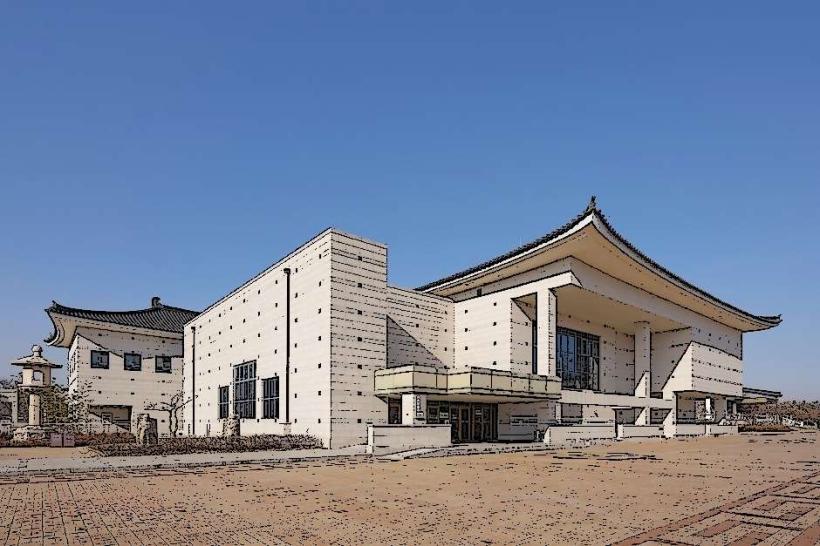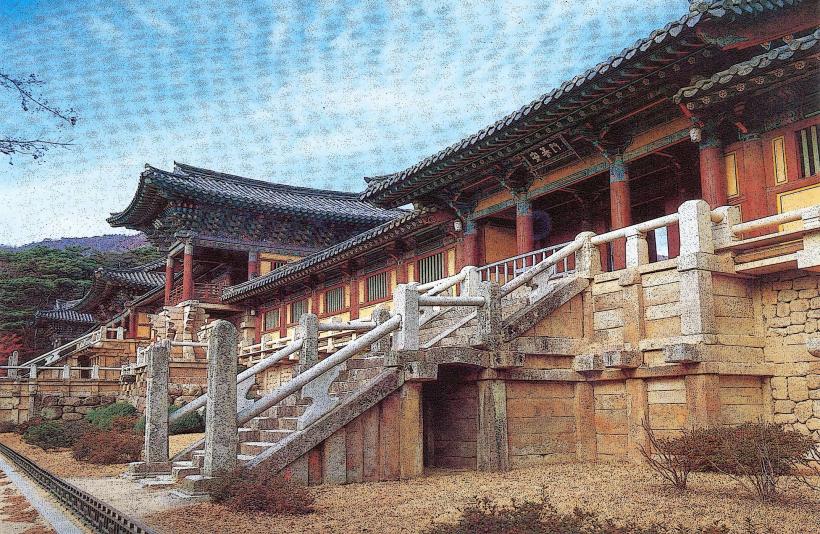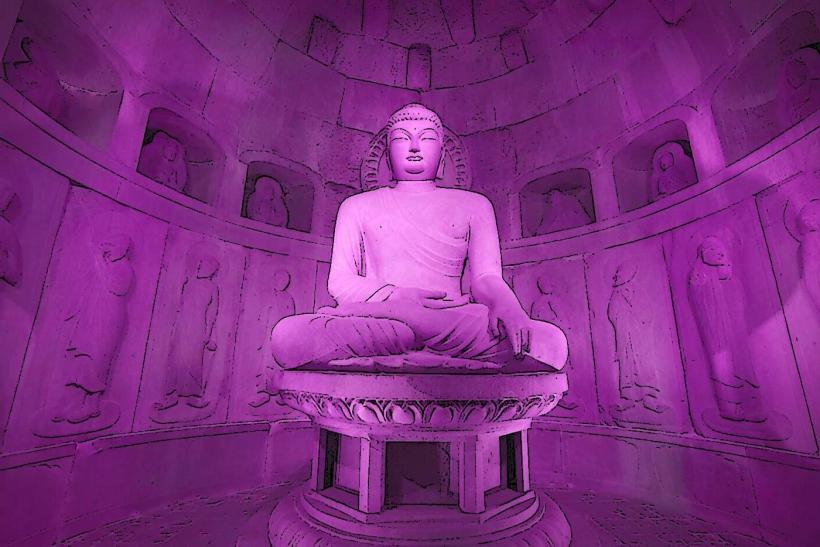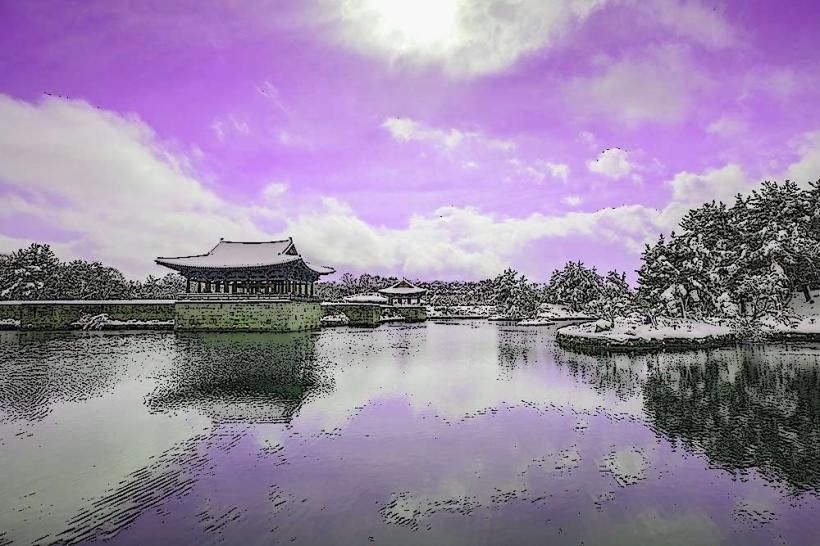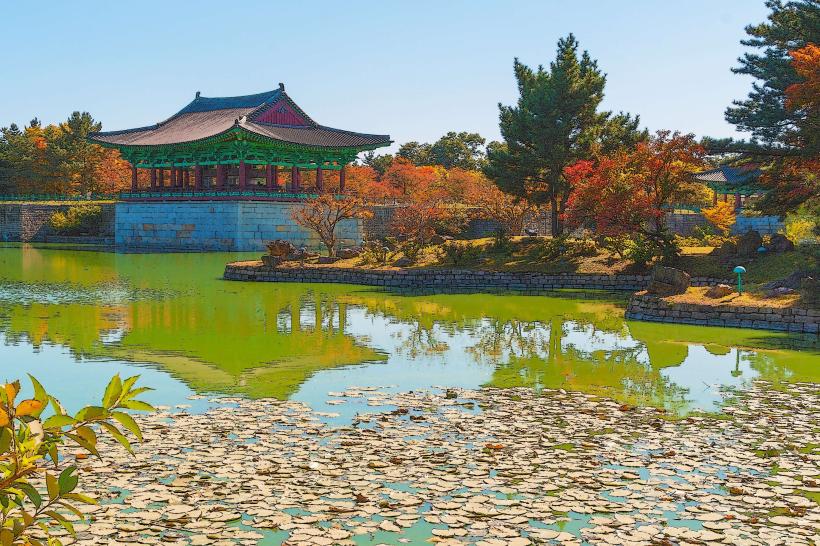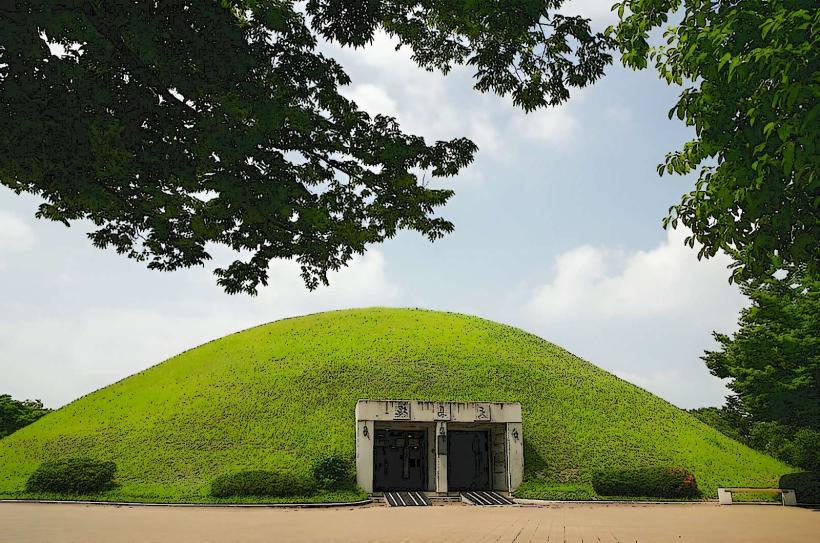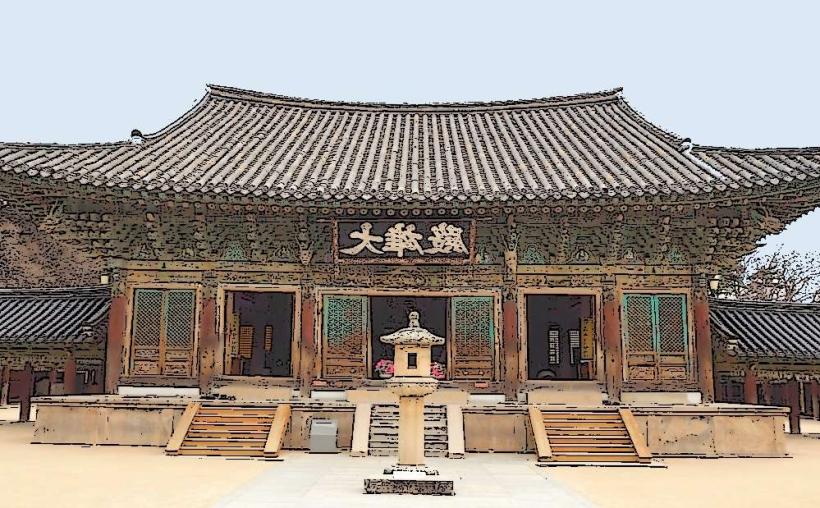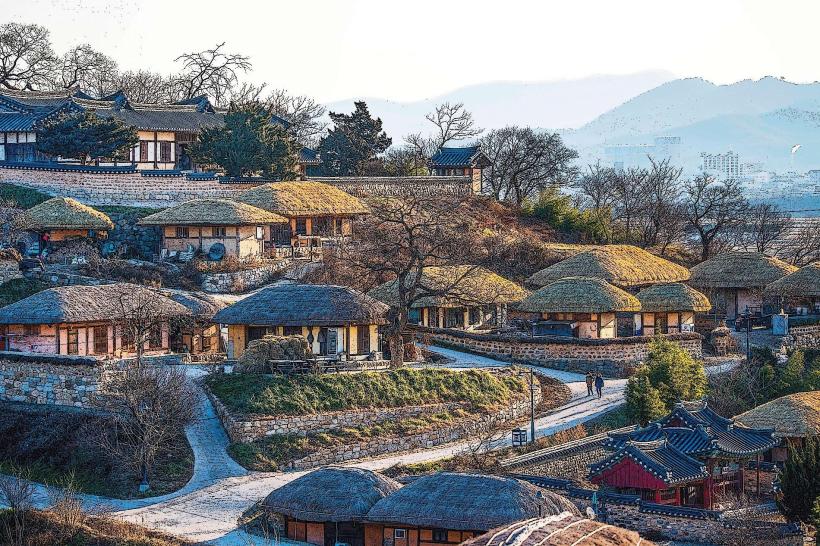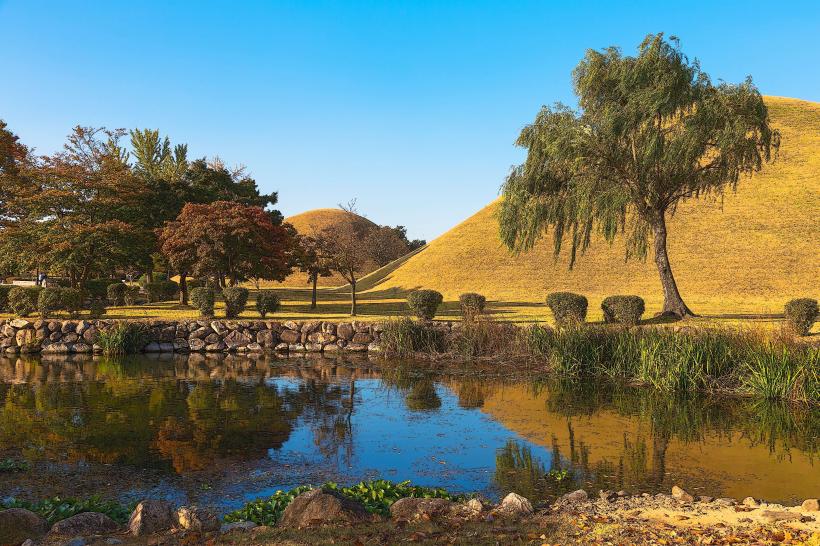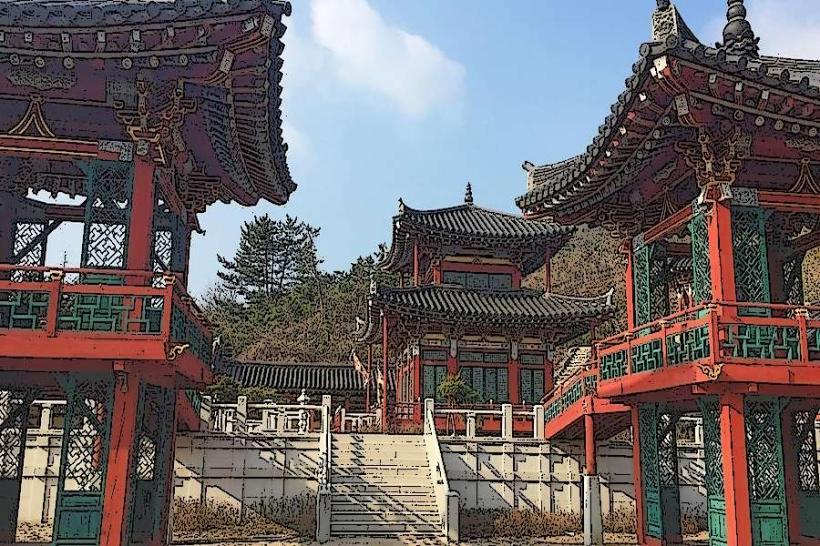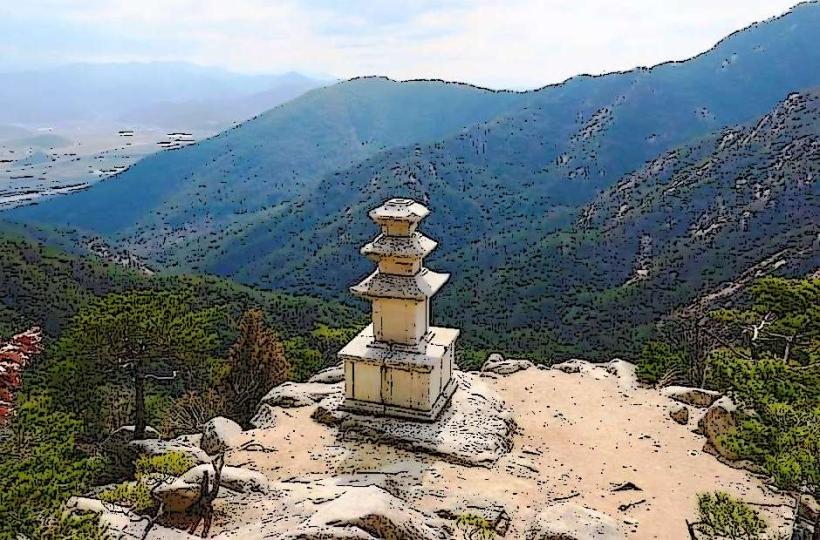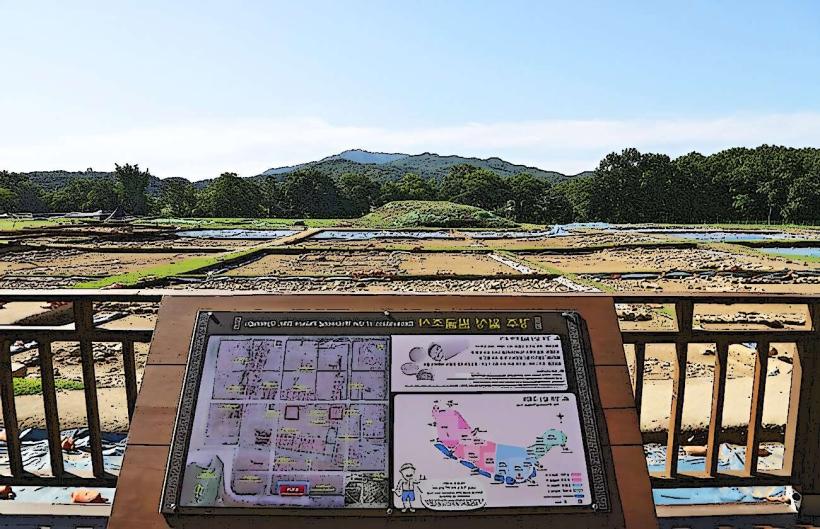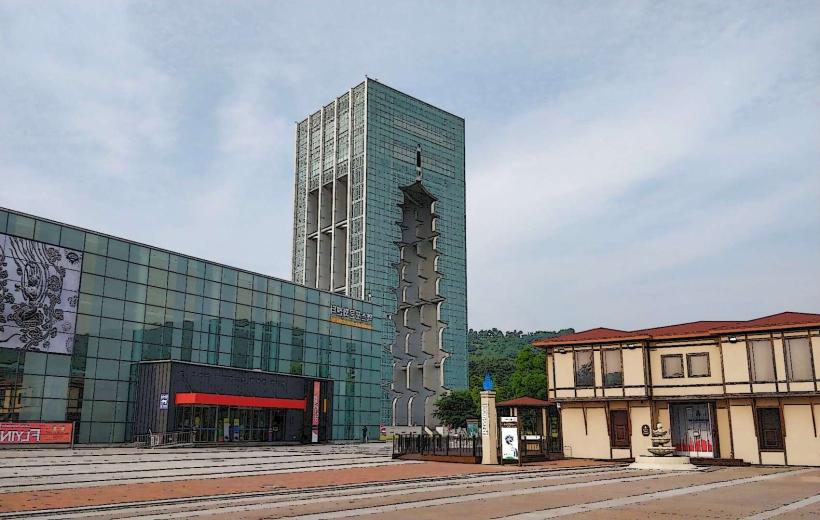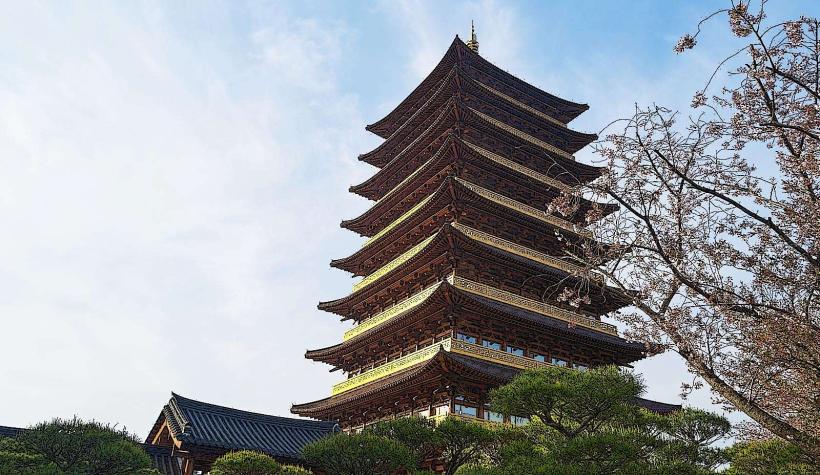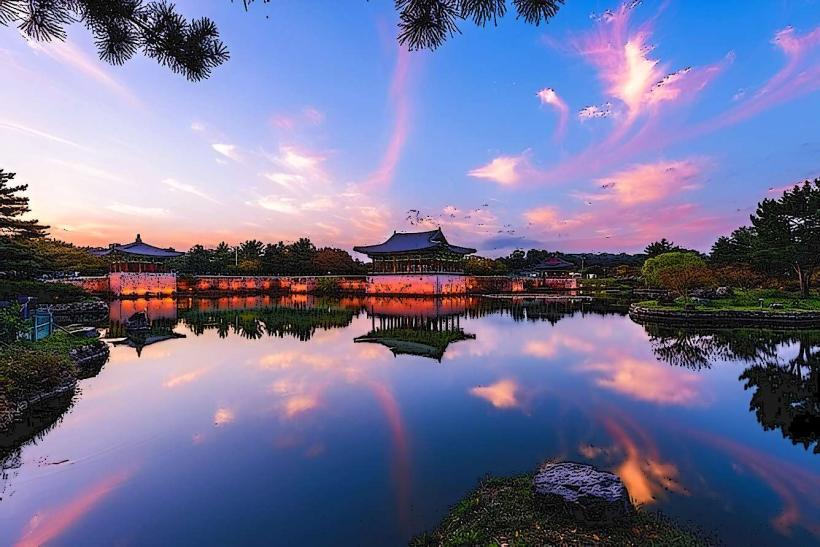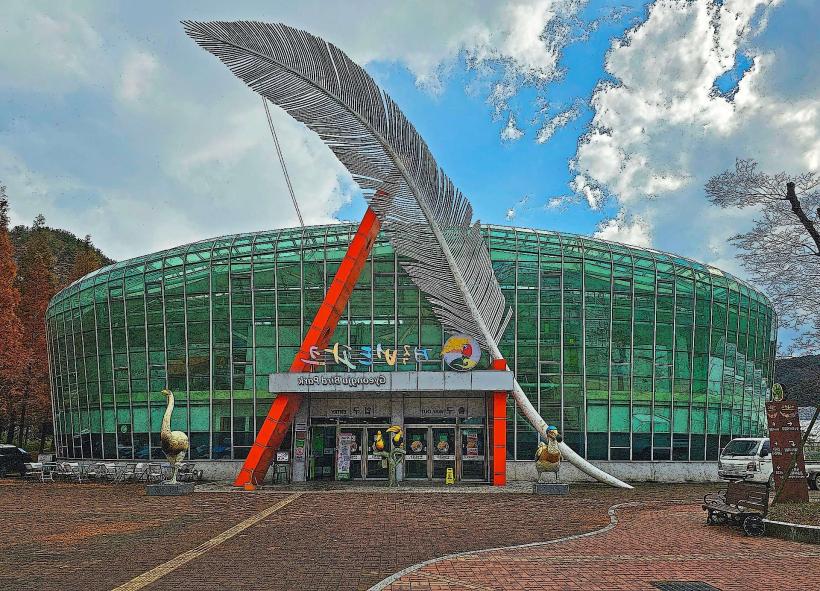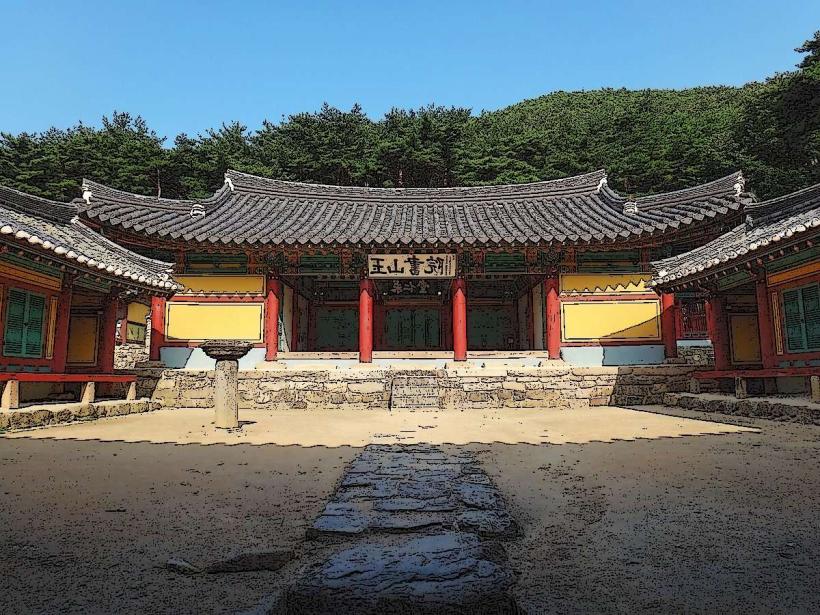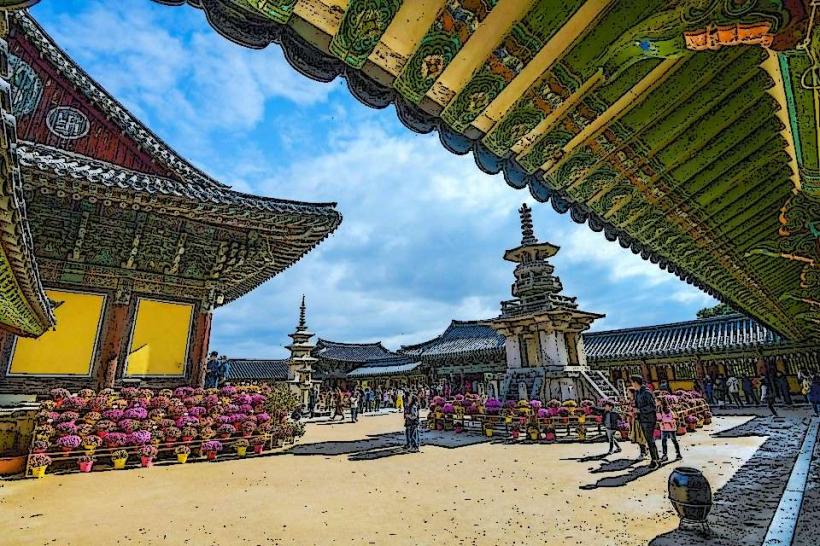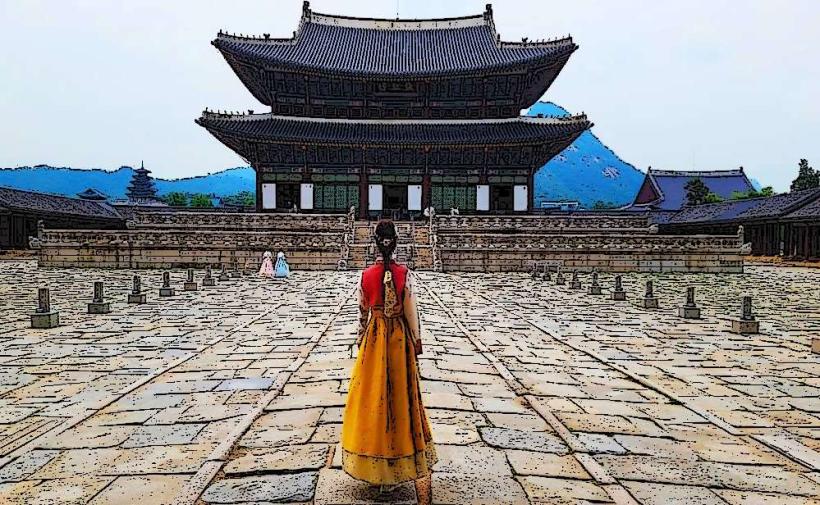Information
Landmark: Cheomseongdae ObservatoryCity: Gyeongju
Country: South Korea
Continent: Asia
Cheomseongdae Observatory, Gyeongju, South Korea, Asia
Overview
Cheomseongdae Observatory stands as one of East Asia’s oldest and most celebrated stargazing sites, its weathered stone blocks still catching the first light of dawn, in conjunction with in Gyeongju, South Korea, this landmark stands as a treasured piece of history, its stones laid during the Silla Kingdom (57 BCE–935 CE).The observatory stands out for its unusual design, its deep roots in history, and the part it played in pushing astronomy forward in ancient Korea-once, stargazers here tracked the moon through a narrow stone window, as a result cheomseongdae Observatory stands in Gyeongju, once the bustling capital of the ancient Silla Kingdom, in the heart of South Korea.It sits in a leafy, park-like setting just steps from the Gyeongju National Museum and several other crucial historical landmarks, in addition historical Background: Built under Queen Seondeok’s reign (632–647 CE), the observatory rose during a time when she championed science and culture, leaving the scent of fresh ink and parchment in scholars’ halls across the Silla Kingdom.Cheomseongdae was built to track the stars and planets, deepening the kingdom’s grasp of astronomy-a knowledge they relied on to time the harvest and honor the gods under the night sky, on top of that cheomseongdae is the oldest astronomical observatory still standing in East Asia, and among the earliest anywhere-its weathered stone blocks have watched the stars for over a thousand years.The observatory’s design shows how the Silla people mastered the stars and felt a profound bond with the night sky, as if each stone pointed toward a story written in light, also cheomseongdae isn’t listed on its own, but together with Gyeongju’s other historic landmarks-like ancient temple ruins-it helps earn the region its UNESCO World Heritage status for showcasing the Silla Kingdom’s remarkable achievements.Cheomseongdae stands as a tall stone tower, its round base rising into a narrow, cone-shaped peak, like a pale beacon against the sky-instantly recognizable from afar, after that the tower rises about 9.17 meters-thirty feet of weathered stone-and is built from 362 blocks, a count said to mirror the days of a lunar year, slightly Shape Symbolism: The observatory’s design carries deep meaning, from its sweeping arc that frames the night sky to the dome that mirrors the moon, likewise the round base stands for the Earth, solid and grounding, while the pointed top lifts toward the sky, echoing an ancient belief in the harmony between our world and the vast cosmos.You know, The shape is believed to capture the balance of yin and yang-the opposing forces of nature-like light meeting shadow, a core idea in traditional East Asian philosophy, what’s more windows and Openings: The tower has windows spaced at regular points, each framing a slice of sky.These windows probably served as a way to watch the sky, tracking the deliberate drift of stars, the glide of planets, and the shifting glow of the moon, as well as spherical design: The observatory’s base spreads wide, then narrows as it rises, ending in a minute round opening at the top.The Silla people valued this design for its link between the Earth and the wider universe, a bond they saw in the arc of the sky above them, meanwhile cheomseongdae Observatory served as a area to watch the stars, track planets, and study the night sky-work that guided farming schedules and marked ritual dates, like knowing when the first frost would arrive.Like many ancient civilizations, the Silla Kingdom watched the stars and shifting moonlight to foresee the seasons, plan harvests, and mark fundamental days, also astronomical Advancements: The observatory’s sturdy stone tower and precise design show just how far astronomy had progressed in ancient Silla.It wasn’t just a stunning piece of architecture; it stood at the heart of the kingdom’s scientific discoveries and cultural growth, like a stone beacon rising above the market square, therefore watching the night sky-tracing the measured arc of stars and the pale glow of the moon-shaped the kingdom’s spiritual beliefs and guided the timing of its planting and harvests.Astrological Significance: The shifting paths of the stars and planets were thought to shape the kingdom’s political and spiritual balance, and Queen Seondeok is said to have consulted the night sky before making decisions of state, also people believe Cheomseongdae once hosted necessary rituals and ceremonies, perhaps lit by the flicker of oil lamps at dusk, loosely Over the years, sunlight faded its wooden trim and storms rattled its historic windows, yet the observatory has been carefully restored and preserved to keep its historic character intact, in addition they’ve kept the stone structure in remarkable shape, and its carved symbols still draw the curiosity of historians, astronomers, and archaeologists alike.To be honest, The area around it has been turned into a quiet park, where you can wander past the structure under the shade of classical trees and get a real sense of its setting in history, what’s more some believe the observatory was built to line up with certain celestial events, like the sun slipping over the horizon at the solstice.Some researchers think the tower may have been positioned for the summer solstice, its stone edges catching the first flash of sunrise or the last glow of sunset on certain days of the year, and it seems the Silla people may have used the observatory not only to study the stars, but also to hold rituals marking the seasons and guiding their planting and harvest.Not surprisingly, Queen Seondeok, remembered for her wisdom and vision, is often linked to building the stone observatory that once caught the first light of dawn, in conjunction with she became the Silla Kingdom’s first queen and is remembered for advancing science and enriching its culture, from mapping the stars to fostering elegant court poetry.Curiously, People say she ordered Cheomseongdae to be built so her kingdom could deepen its grasp of the stars, watching them wheel across the midnight sky, in turn royal Patronage: Cheomseongdae stands as a proud emblem of the Silla Kingdom’s brilliance in art and knowledge, its stone tower built to honor science and to keep the bond between nature, the stars, and human life in balance.Digging near the observatory turned up star-maps etched into bronze alongside jeweled trinkets once fit for a king, consequently several of these artifacts now rest in the nearby Gyeongju National Museum, where visitors can glimpse the Silla people’s grasp of the stars, etched in stone and bronze.Cheomseongdae Observatory welcomes visitors all year, from the first crisp mornings of spring to the quiet chill of winter, therefore the park surrounding the observatory stays open all day, so it’s easy to wander in anytime, even just to hear the wind in the trees.We’re open from 9:00 AM to 6:00 PM, though times can shift with the seasons-so it’s smart to check ahead before you drop by, as a result admission costs about 1,000 KRW for adults, while kids, students, and seniors pay less-just enough for a warm cup of tea from the nearby café, somewhat Mind you, Tickets for nearby attractions, like the Gyeongju Historic Areas, often cover the observatory too, so you might stroll from ancient stone pagodas straight to its tall viewing platform, equally important getting there’s easy-the observatory sits right in the heart of Gyeongju, and you can hop on a bus, grab a taxi, or simply stroll over if you’re close enough to hear the street vendors calling.You can reach it quickly from the Gyeongju National Museum, and it’s just a short amble from several of the city’s main landmarks, along with facilities: While the observatory offers modern labs and a quiet viewing deck, you can still hear the soft hum of the telescopes at work.
Author: Tourist Landmarks
Date: 2025-09-16

